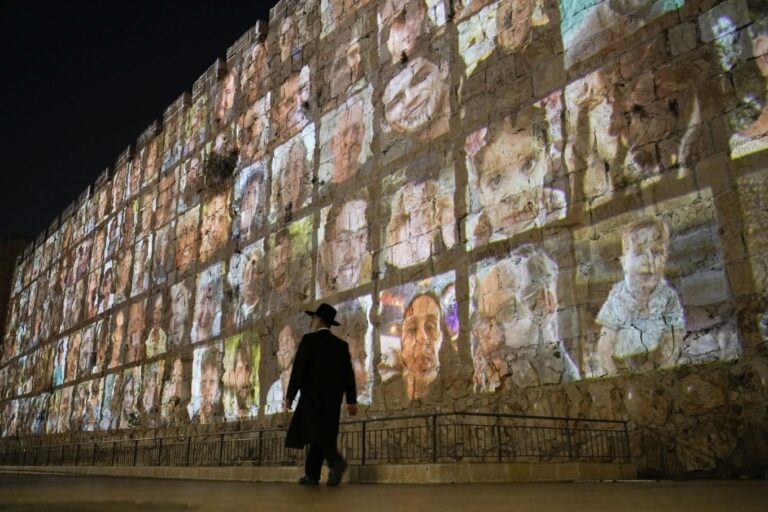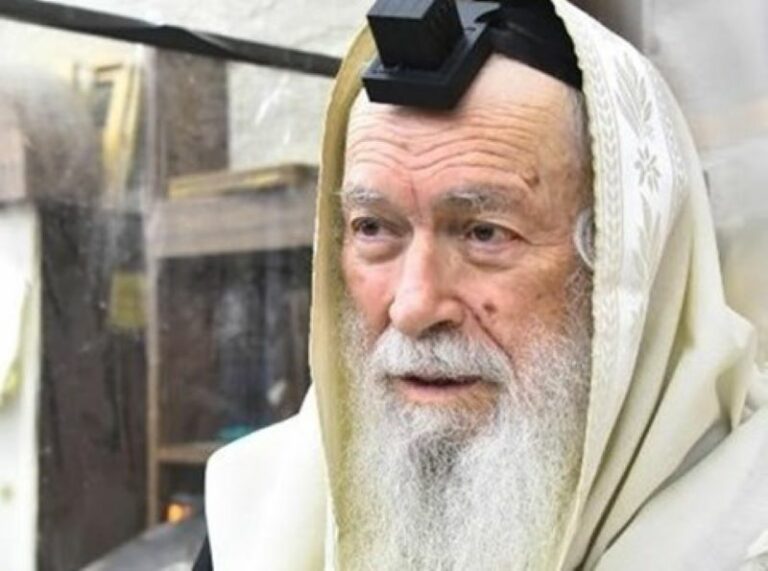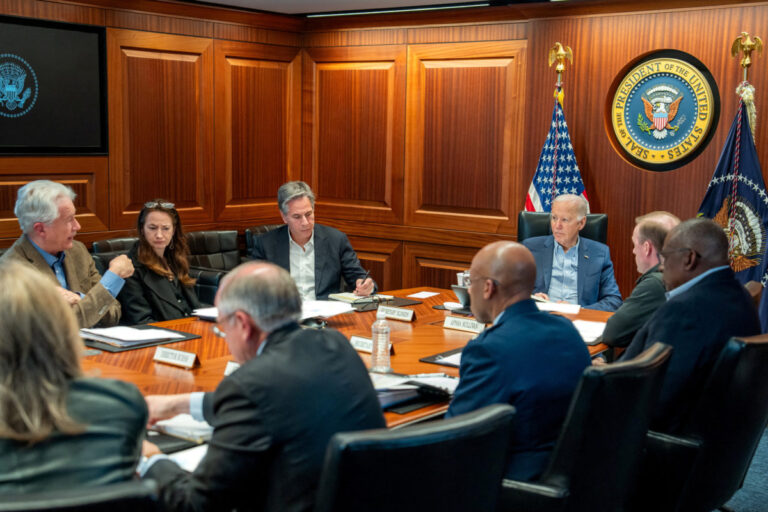 The following is reported by the Jewish Telegraph UK: A Prestwich doctor has warned about exposure to toxic carbon monoxide because of ill-fitting “blechs” used on Shabbos.
The following is reported by the Jewish Telegraph UK: A Prestwich doctor has warned about exposure to toxic carbon monoxide because of ill-fitting “blechs” used on Shabbos.
A blech is used by Orthodox Jews to cover a stove-top. Usually, one or two of the burners beneath the blech are left on low – sufficient for warming food placed on top.
Now Dr Nathan Stein has called on the religious community to make sure they have a carbon monoxide meter fitted in their kitchens to detect high levels of the poisonous gas.
He said: “If you experience headaches, nausea, vomiting or flu-like fatigue recurrently, especially on Shabbos, it could be that your blech is causing CO poisoning if it is on a gas flame.
“Make sure you either get a smaller blech that does not block the air flow at the sides, or raise the blech on fireproof blocks so there is a wider gap all around for the air to get in.”
When gas is burned, it produces carbon dioxide. But when it isn’t completely burned it also releases the dangerous carbon monoxide.
The warning comes after Dr Stein began feeling unwell before Shabbos and, after checking his CO meter, found levels higher than they should be.
He said: “We had the gas on very low under the blech, on two gas rings.
“I noticed that the flame was nice and blue, but I also noticed that the gap between the edge of the blech and the edge of the cooker was quite narrow, approximately one centimetre to half an inch all around.
“I wondered if that might not be enough for the flame to get enough oxygen to burn fully.”
He added: “CO toxicity varies from person to person, so a reading of 35 over a few hours could cause poisoning to the elderly or to very young children. Since this incident, we have been putting the blech on the hob crooked to leave large gaps on the edges for the air to feed the flame.
“As a result, the CO meter has remained at 0.”
Other alternatives to using a blech could include an electric cooker or a hot plate.
It is also important to make sure the room is well ventilated as the burning gas uses up oxygen.






17 Responses
some people leave all their food in a low oven on Shabbos, is this the same danger?
The article should be entitled “Frum UK Doctor…” otherwise the title sounds anti- Semetic and people are less likely to regard the article link from the home page, and this is a very important article woth matters of sakanos nefashos.
Interesting.
Always good to check the flame to make sure its still on and if not, turn off the gas to avoid CHV an explosion.
Are the blechs in the UK made differently then the ones in the US? Ar the stove tops different?
Would this apply to hotplates as well?
What this doctor is saying makes no sense. The formation of CO is the result of combustion, using up the Oxygen and adding Carbon.
Positioning the blech to give the fire more air should not decrease CO at all.
Sounds to me like a coincidence, which he blamed on the blech.
More important is to leave a window open a little to allow ventilation from and to the outside. This is important ANY time we have a flame in the house.
My father, A”H, used to have a “Shabbos Checklist”
Every Erev Shabbos, my father would put on his shtreimel and bekeshe and go through this checklist.
Some of the things I remembered were:
1. KITCHEN WINDOW OPEN 1″ AT THE TOP, and 1″ AT THE BOTTOM. He explained that the hot air would want to leave at the top, and cool air would come in at the bottom. He demonstrated this to us with thin strings to show the air movement. He was very careful about Carbon Monoxide and explained it to all of us…. accurately.
2. OPEN ALL BOTTLES OF SODA, MILK OR JUICE WE MAY NEED OVER SHABBOS AS WELL AS ALL PRE-PACKAGED FOODS. He felt that our failing to open them before Shabbos does not create a B’Dayeved situation, unless we had unexpected orchim l’chovod Shabbos.
3. DOUBLE CHECK EVERY CANDLE TO MAKE SURE IT IS HELD WELL, AND WILL NOT FALL OVER, AND CHECK TO MAKE SURE THE LEICHTER WAS CENTERED IN THE TRAY, JUST IN CASE. He insisted the tray under the leichter must be much larger than the leichter, and he put an insulated and fireproof “blech” under the tray. He did not want accidental fires…. kind of a hangup of his.
4. ADJUST FLAMES UNDER BLECH to make sure they are the right heights.
5. REMOVE KNOBS and put tape over stem… he always wanted knobs off to make sure nobody accidentally raised the flame.
6. ALL FOOD ON BLECH COOKED ALL THE WAY. He was careful to make sure everything on the blech was mevushal kol tzorko before Shabbos.
There were a few more that I can’t remember. But he did them all dressed for shul with his shtreimel on. He felt they were as important as anything else l’chovod Shabbos, and ALWAYS went through this checklist, finishing about 20 minutes before Licht Tzindin.
He used to say, “Do a few things right, and nobody sufficates or burns, Chas v’sholom. And live L’CHATCHILA not B’Dayeved.”
6. DM your father seems to have been a gigantic tzadik.
If this is true, may we please know who he was? Also you should write Z”L on your father!
hocking101: Only an ultra-sensitive YWN reader would think that a warning about carbon monoxide from a blech is antisemetic, whether it was said by a frum Jew, an irreligious Jew, or a Gentile.
DM: Your father was correct, ventilation is important. However, you have the chemistry wrong. The normal result of combustion is carbon dioxide, which people exhale all the time, and is not harmful. The potentially deadly carbon monoxide is the result of incomplete combustion, which can be avoided by making sure the fire has plenty of air.
My father prefered A”H, Alav Hasholom. He did not like “superfluous” compliments.
He insisted that at his Levaya, we should only mention pure facts, and no opinions. He said, “Keep it very modest. Say nothing which would make me blush if I were standing there.”
One correction to what I wrote. I AM certainly in favor of a CO detector. To me that is such a no brainer, that I failed to mention it. I only commented about the article, because I do not believe the placement of the blech is causing the CO, and I fear that if the blech is raised too high, it could cause someone’s sleeve to catch on fire.
Keen, you are correct about incomplete combustion. I kind of felt that the blech position with not cause incomplete combustion. But poor air circulation into the building, reduces the amount of Oxygen, which results in incomplete combustion, with results in CO.
I have never seen a blech sufficate a burner badly, as the gas outlets are not on top, and there is a grate on top of the burners, usually spaced high enough to keep the pot in the correct position. The blech directly on the grate, is in the same position as a large pot would be, and should not be depriving the fire of air more than the pot would. If the spacing is good for a large pot or pan, it should be fine for a blech.
Plus elevating the blech, could create a burn and fire hazard.
Now, if the blech were surrounded by walls, then I would agree with you.
Other than that, equally important to keep fresh air flowing into the building, and the hot air, which have a higher CO2 content exiting the room. From normal, the air’s CO2 raises first, then CO. Am I wrong?
Now, if the guy uses a very large flame, it needs more space.
#5 Is there such a thing as a gas hotplate? You are unlikely to get gas fumes from an electric hotplate!
Holykugel-
Not really. While all gas appliances need proper ventilation, keeping food in an oven that is on is not disrupting the normal intake and exhaust airflow.
mark levin-
Even where there is nothing present that can ignite the gas, the gas itself is dangerous and can c’v cause suffocation. The risk of this is low, because of the smell that the gas companies add to the gas, making its detection almost a sure thing.
fedup11210-
I have no idea if they are made differently, but the same principles apply.
sephardicpride-
This does not apply to electric hotplates, stovetops or ovens. Their heat is generated by electric resistance, not combustion. Of course, they are hot enough to cause burns or even fires if one is careless with them.
DM-
KeenObserver-
“KeenObserver”s info is correct. CO2 does have a level at which it is lethal, but it is much higher than CO’s. If I remember my 10th grade biology properly, CO is deadly because the hemoglobin in one’s blood forms such a tight bond with the CO that the O2 is ignored. This is why victims of CO poisoning often have a flushed complexion. The strength of this bond causes even hyperbaric chambers to not be as effective as the normally would.
DM (again)-
A clean burning flame depends on both unimpeded intake and exhaust. The heat of a burner usually creates enough of an convection effect that that is not a problem, even with a large pot. A blech, that covers a much larger area can cause an issue with a starved flame, or inadequate exhaust. (BTW – your father A”H sounds like he was a very smart man.)
The carbon monoxide detectors with digital readouts are the best. At least one on each level is recommended.
The kind without a digital readout could accumulate small amounts of carbon monoxide in the sensor over time, eventually causing false alarms. This happened to me a couple of times in 1994 or 1995 (it could be that today’s models are more reliable, but I wouldn’t take a chance). I have used digital models since 1995 without having any false alarms.
I keep my fan in the rangehood on (it is vented to the outside)
this week i moved the blech over slightly to give the flame more space and i didn’t get the headaches and nausea i usually get when i use the blech. i always wondered if it was safe because i felt sick from it. thanks for the advice!
I can only try-
You are correct. My father alwas told me we needed to have a small blue flame, and did explain all that, just as we learned in school. But, I assumed the kind of stove with grates that hold pots and blechs high.
Certainly, if one has a lower grate, or if the blech is so large as to starve the flame of O2, you will have incomplete combustion.
But, we should see this in the flame color, I would guess. If it is short of O2, shouldn’t the flame turn yellowish?
Either way, for sure everyone should have a CO detector, and make sure to provide fresh air.
A venting-to-the-outside range hood is a very good thing, but also make sure to have a source of fresh air.
Also, some blechs have some coating which needs to burn off, and should not be used in a closed room the first time.
DM-
“If it is short of O2, shouldn’t the flame turn yellowish?”
This made sense to me, but I wasn’t sure. A google search confirms that you’re correct. In addition, if smoke is being generated by the fire, you know unburned matter is escaping.
The color of a flame is dependent on its heat and what it’s burning. A blue flame indicates a hotter temperature, so waste is not being converted into soot or CO. Fireworks makers are experts in which substances burn with what colors. A scientific device (I think it’s called a spectrograph or spectrometer – not sure) is used to detect even minute impurities in a burning substance by the colors it generates.